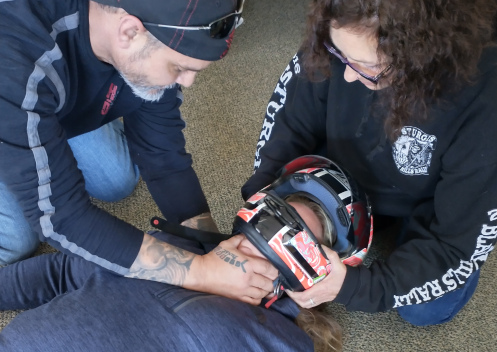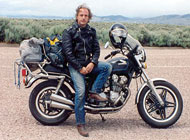Accident Scene Management: What Next?
I recently took an Accident Scene Management class. Here are the first two posts. First on the Scene. Safety First.
OK, presumably no one is now in danger of getting killed trying to help this injured person so what comes next? You need to assess the situation and figure out what needs to be done to help. Then you need to contact emergency services.
These days it is nearly always possible to call 911 for help to be sent. If you don’t have cell service you can try texting 911 and that sometimes will be successful. If calling is not possible and you are not the only one there, send someone for help. This may even just be another passerby. It is important, however, to instruct that person to return to the scene after they have put out the distress call so that you will know for certain that help really is on the way.
If you are the only one there and you must go for help, this is when you would position the person in the “puke and drool” position described previously before you leave.
Before the person you’re sending for help departs, ask them if they know for sure where you are. “Back up Highway 20 somewhere” is not good enough. Find a mile marker or a physical landmark or something so the rescue crew will know as precisely as possible where they need to go. And if you have choices it is better to send a bland-looking person rather than a big hairy tattooed biker type who some timid people might refuse to open the door to.
Starting out, you need to presume the injuries are bad until you can determine otherwise. Assume the worst. Determine, to the best you can, the extent of injuries. If the person is conscious and can talk you also need to ask their permission to assist them. Yes, it’s a CYA but if they say no and you try anyway and end up injuring them further the Good Samaritan law will not protect you. If they are unconscious consent is implied.
Sometimes at least some of the injuries are obvious. If there is a lot of blood and visible open wounds, those need to be addressed. But don’t forget that there may well be internal injuries that are not immediately obvious, either to you or the injured party.
Oftentimes a person may be conscious and initially unaware of how badly they have been hurt. Try very hard not to let them just get back on their bike and ride away. After the adrenaline subsides they may find themselves going into shock or worse. Better to keep them on the ground for at least 15 minutes and see what happens.
One approach here, as offered by one of the EMTs in the class, was to say, “You just sit here for a couple minutes and meanwhile I’ll go take a look at your bike and see if it’s badly damaged and whether it’s rideable.” Then take your time doing that.
Also, use this time to gather information for the emergency response team. While the person may initially be conscious, that could change. Ask their name, where they hurt, whether they have allergies and what medications they take, when they last ate or drank and what, any pertinent medical history, and if they know what happened to cause their crash. Write it all down, or record it with your phone.
If they are unconscious, look for medical alert bracelets on their neck or wrist.
The experienced people in our group stressed that it is important that you stay cool and act competent, even if you don’t feel that way inside. The injured person is much more likely to panic if you are acting in a frantic manner. Be calm and project that you are in control of the situation.
Biker Quote for Today
Two priests were riding very fast on a motorcycle.
They were promptly stopped by a policeman who says, “What do you think you’re doing? What if you have an accident?”
The priests say, “Don’t worry, my son. God is with us.”
The policeman says, “In that case, I have to book you. Three people are not allowed to ride on a motorcycle.”

